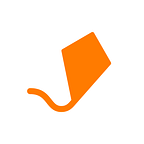How to become a product designer
Product designers do a lot more than just design, they play a key role in the creation of digital products.
Product Designers are in charge of the creation, development and maintenance of digital products. On a daily basis, they do a lot more than just design. They play a key role in startups that develop apps or digital platforms.
Apart from ensuring that a product looks good and works properly (such trifles, right?), the Product Designer is responsible of establishing the aim of a product, the market segment in which it is going to be commercialized, the platforms in which it will be available, the audience and its characteristics.
WHAT IS A DIGITAL PRODUCT?
In order to understand the role of Product Designer we need to know what a digital product is. A digital product is any platform that addresses a need or solves a problem that users have at a certain point. Along these lines, an app that allows you to get updates on the weather or the news, know which public transport to take or engage in real-time conversations with other users is, by definition, a digital product.
Digital products must enable interaction with users and, at the same time, be able to update themselves so as to enhance the experience of those who use the app or platform.
WANNA BE A PRODUCT DESIGNER? DON’T FALL IN LOVE WITH YOUR OWN DESIGNS
When it comes to designing a digital product, it is essential not to fall in love with your own creations. Digital products are alive and constantly changing, so they will never remain in their original form. Because of this, Product Designers must be capable of adapting to their products’ evolution.
Product Designers must detach themselves from their creations. There is an inevitable situation within the product design area you cannot escape from: sooner or later, most of your creations end up in the trash. Designers tend to be in love with their own work, and this is a trait they should lose if they want to become Product Designers. Every design has an expiration date, and that date will arrive at some point. No exceptions.
Now, products change because users’ needs change. Likewise, technology trends vary as well, thus any product that aims at being successful in the digital market should side with these new tendencies.
In connection with this, it is worth noting that when Product Designers receive feedback from users, they have to consider making changes only in those instances which would prompt an improvement in user experience. We must never focus on changes related to the consumers’ personal taste. Any app modification should obey a logical reasoning. Making changes “just because” won’t do.
The Product Designer must establish a roadmap and stick to it. If the designer falls out of its scope, it is likely that the product will be stuck and won’t make headway. That’s why, before embarking on any product, we need to lay down a hypothesis about how our product is going to work and what the user will be like. Once that’s done, the next step is to test our hypothesis and suggest improvements based on the results.
WORK METHODOLOGY
When developing digital products, the simplest and most efficient work methodology is to come up with different versions of the same product. The Product Designer’s ultimate goal is to get to the most developed version of an app. But to achieve this, although it may seem self-evident, we have to start working on the first one.
To do this, it is crucial that the product designer embraces the concept of Minimum Viable Product (MPV), which is any product that fulfils only the functions for which it was created and, over time, will add improvements and new features.
In order to understand the evolution of the versions of a digital product, we need to be aware of three stages that are present in the development of any app: Must have, Should Have and Nice to have. Must have corresponds to the functions that a product has at its most basic level, which means that the product only includes those characteristics for which it was intended.
Should have stands for those functions or features that are added to the original product, with the aim of enhancing user experience. Finally, Nice to have refers to the more complete, final version of the product. Transitions, graphic assets and any ideal element regarding an operative and visual point of view are included at this stage.
WHO CAN BE A PRODUCT DESIGNER?
Anyone can become a product designer, as long as they’re ready to face the responsibilities and consequences that it entails. Living in a digital age, using apps and being interested in understanding how patterns and app design flows work is a great start if you want to take up this profession.
The talent of a Product Designer is measured by how successful the product is. So, if you want to delve into product design, you should adopt a routine based on observing, recognizing and understanding which are the elements that make up a good product.
Product Designers should never stop researching things and looking up sources to improve themselves. A Product Designer must train the eye, but most of all, must be willing to endure this training daily.
An anxious person could never be a Product Designer, because working in product design takes time and you have to learn to respect its particular timing. A good product designer should be smart in choosing his or her battles. A Product Designer should be a team worker who knows exactly when to make a decision. And that, folks, isn’t something you can learn from books.
